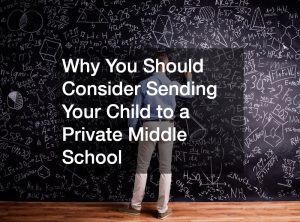Education is constantly evolving, and as a parent, it can be difficult to keep up with all of the changes. From technology to teaching methods, today’s students have access to more resources than ever before. Here’s a look at five ways education has changed over the years.
Technology in the Classroom
The use of technology in the classroom has been one of the most significant changes in recent years. With computers, tablets, and smartboards now commonplace in classrooms across the world, technology has greatly enhanced both learning and teacher effectiveness.
Teachers are now able to communicate with students through email, create interactive lessons using multimedia tools, and even access real-time data about student progress. Technology has also enabled students to expand their knowledge beyond what is taught in school by accessing online resources such as Khan Academy or TED Talks.
Additionally, many schools have implemented coding programs and robotics to promote STEM learning, which is helping to prepare students for future careers. This is an invaluable resource as technology is quickly becoming a major part of people’s lives.

Online Classes
Another notable change in education is the prevalence of reliable online elementary schools. Online learning platforms allow students to access quality educational content from anywhere with an internet connection.
This provides a great opportunity for those who cannot attend traditional schools due to geographical limitations or health concerns. Online classes are also becoming increasingly popular among homeschoolers, as they provide a wide variety of curricula and allow for personalized learning.
This type of learning is also slowly taking strides at the secondary and tertiary levels, with more universities offering distance learning and online degree programs. It’s especially helpful for working adults who want to further their skills and pursue higher qualifications.
Personalized Learning
Personalized learning is a teaching method that focuses on meeting each student’s individual needs. This includes tailoring instruction based on a student’s strengths and weaknesses and providing various learning activities to engage different types of learners.
Personalized learning also allows students to explore topics that interest them while working at their own pace. For example, a student who is passionate about music can take advantage of online resources to learn more and expand his or her understanding.
By allowing students to take ownership of their learning process, teachers can ensure that each student gets the most out of their educational experience. In addition, personalized learning encourages students to become more self-reliant and develop a greater sense of responsibility for their own education.
Project-Based Learning
Project-based learning (PBL) is an approach that encourages students to explore complex questions and real-world problems from multiple perspectives by engaging them in hands-on activities such as research projects or experiments.
PBL helps build critical thinking skills by giving students an opportunity to apply what they are learning in class to solve relevant issues or challenges related to those topics. For instance, a science class may work together to investigate climate change’s effects or design a sustainable city model.
Additionally, project-based learning encourages collaboration among peers, which further enhances problem-solving skills and helps promote social-emotional development. Through authentic experiences, students gain a deeper appreciation of their learning content and develop a lifelong passion for knowledge.
Increased Diversity & Inclusion
One major change in education over the past few decades has been increased diversity and inclusion efforts across schools nationwide. In order for all students to have access to quality education opportunities regardless of race or gender identity, schools must ensure they are creating inclusive environments where everyone feels respected and valued for who they are and what they bring to the table.
This includes promoting diversity within faculty staff, implementing anti-discrimination policies within curricula, and ensuring all school materials demonstrate respect for diverse backgrounds and values. For starters, many schools are offering culturally-relevant classes to allow students to explore their heritage and identity.
Moreover, schools are providing more support for students with special needs, such as providing resources to help students with autism or other learning disabilities. These efforts play a vital role in creating an equitable education system that allows all children to thrive.
It is clear that education has come a long way over the past few decades! With technology playing an increasingly important role in how people learn today, it is important for parents to stay informed about these changes so they can best support their children’s academic development moving forward into this new era of education. By understanding how the current educational system works and embracing its unique capabilities, everyone can ensure that their kids get the best possible education available today!
















